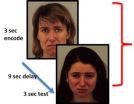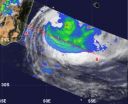(Press-News.org) CAMBRIDGE, MA -- A typical cancer cell has thousands of mutations scattered throughout its genome and hundreds of mutated genes. However, only a handful of those genes, known as drivers, are responsible for cancerous traits such as uncontrolled growth. Cancer biologists have largely ignored the other mutations, believing they had little or no impact on cancer progression.
But a new study from MIT, Harvard University, the Broad Institute and Brigham and Women's Hospital reveals, for the first time, that these so-called passenger mutations are not just along for the ride. When enough of them accumulate, they can slow or even halt tumor growth.
The findings, reported in this week's Proceedings of the National Academy of Sciences, suggest that cancer should be viewed as an evolutionary process whose course is determined by a delicate balance between driver-propelled growth and the gradual buildup of passenger mutations that are damaging to cancer, says Leonid Mirny, an associate professor of physics and health sciences and technology at MIT and senior author of the paper.
Furthermore, drugs that tip the balance in favor of the passenger mutations could offer a new way to treat cancer, the researchers say, beating it with its own weapon — mutations. Although the influence of a single passenger mutation is minuscule, "collectively they can have a profound effect," Mirny says. "If a drug can make them a little bit more deleterious, it's still a tiny effect for each passenger, but collectively this can build up."
Lead author of the paper is Christopher McFarland, a graduate student at Harvard. Other authors are Kirill Korolev, a Pappalardo postdoctoral fellow at MIT, Gregory Kryukov, a senior computational biologist at the Broad Institute, and Shamil Sunyaev, an associate professor at Brigham and Women's.
Power struggle
Cancer can take years or even decades to develop, as cells gradually accumulate the necessary driver mutations. Those mutations usually stimulate oncogenes such as Ras, which promotes cell growth, or turn off tumor-suppressing genes such as p53, which normally restrains growth.
Passenger mutations that arise randomly alongside drivers were believed to be fairly benign: In natural populations, selection weeds out deleterious mutations. However, Mirny and his colleagues suspected that the evolutionary process in cancer can proceed differently, allowing mutations with only a slightly harmful effect to accumulate.
To test this theory, the researchers created a computer model that simulates cancer growth as an evolutionary process during which a cell acquires random mutations. These simulations followed millions of cells: every cell division, mutation and cell death.
They found that during the long periods between acquisition of driver mutations, many passenger mutations arose. When one of the cancerous cells gains a new driver mutation, that cell and its progeny take over the entire population, bringing along all of the original cell's baggage of passenger mutations. "Those mutations otherwise would never spread in the population," Mirny says. "They essentially hitchhike on the driver."
This process repeats five to 10 times during cancer development; each time, a new wave of damaging passengers is accumulated. If enough deleterious passengers are present, their cumulative effects can slow tumor growth, the simulations found. Tumors may become dormant, or even regress, but growth can start up again if new driver mutations are acquired. This matches the cancer growth patterns often seen in human patients.
"Cancer may not be a sequence of inevitable accumulation of driver events, but may be actually a delicate balance between drivers and passengers," Mirny says. "Spontaneous remissions or remissions triggered by drugs may actually be mediated by the load of deleterious passenger mutations."
When they analyzed passenger mutations found in genomic data taken from cancer patients, the researchers found the same pattern predicted by their model — accumulation of large quantities of slightly deleterious mutations.
Tipping the balance
In computer simulations, the researchers tested the possibility of treating tumors by boosting the impact of deleterious mutations. In their original simulation, each deleterious passenger mutation reduced the cell's fitness by about 0.1 percent. When that was increased to 0.3 percent, tumors shrank under the load of their own mutations.
The same effect could be achieved in real tumors with drugs that interfere with proteins known as chaperones, Mirny suggests. After proteins are synthesized, they need to be folded into the correct shape, and chaperones help with that process. In cancerous cells, chaperones help proteins fold into the correct shape even when they are mutated, helping to suppress the effects of deleterious mutations.
Several potential drugs that inhibit chaperone proteins are now in clinical trials to treat cancer, although researchers had believed that they acted by suppressing the effects of driver mutations, not by enhancing the effects of passengers.
In current studies, the researchers are comparing cancer cell lines that have identical driver mutations but a different load of passenger mutations, to see which grow faster. They are also injecting the cancer cell lines into mice to see which are likeliest to metastasize.
###
The research was funded by the National Institutes of Health/National Cancer Institute Physical Sciences Oncology Center at MIT.
Written by Anne Trafton, MIT News Office
END
ANN ARBOR—Women in developed countries survive roughly 10 years longer after a breast cancer diagnosis compared to women in poor-to-middle-income countries, a new University of Michigan study suggests.
The report demonstrates the lack of access to good health care faced by women in poor countries, said the study's principal investigator Rajesh Balkrishnan, an associate professor at the U-M schools of Pharmacy and Public Health.
Early diagnosis and sustained treatment were the biggest hurdles and also the main indicators of patient survival, he said.
Balkrishnan and ...
VIDEO:
NIMH's Dr. Maura Furey talks about how a functional brain imaging measure may help predict a patient's response to a rapid-acting experimental antidepressant.
Click here for more information.
A telltale boost of activity at the back of the brain while processing emotional information predicted whether depressed patients would respond to an experimental rapid-acting antidepressant, a National Institutes of Health study has found.
"We have discovered a potential ...
Healthy eating not only promotes growth and development, but also provides important opportunities for children to socialize during meals. A new, comprehensive analysis of feeding behavior in children with autism spectrum disorders (ASD) indicates that these children are five times more likely to have a feeding problem, including extreme tantrums during meals, severe food selectivity and ritualistic mealtime behaviors.
Researchers at Marcus Autism Center and the Department of Pediatrics at Emory University School of Medicine conducted a comprehensive meta-analysis of ...
A new NOAA research report finds that both fish populations and commercial and recreational anglers have benefited from "no-take" protections in the Tortugas Ecological Reserve in the Florida Keys National Marine Sanctuary.
The report, "An Integrated Biogeographic Assessment of Reef Fish Populations and Fisheries in Dry Tortugas: Effects of No-take Reserves," is the first to evaluate how the 151-square nautical mile Tortugas Ecological Reserve affects the living marine resources of the region and the people whose livelihoods are connected to them.
The report's analysis ...
Boston, MA – Having adequate levels of vitamin D during young adulthood may reduce the risk of adult-onset type 1 diabetes by as much as 50%, according to researchers at Harvard School of Public Health (HSPH). The findings, if confirmed in future studies, could lead to a role for vitamin D supplementation in preventing this serious autoimmune disease in adults. The study was published online February 3, 2013 and will appear in the March 1 print edition of the American Journal of Epidemiology.
"It is surprising that a serious disease such as type 1 diabetes could perhaps ...
According to a new technical report, the effects of climate change will continue to threaten the health and vitality of U.S. coastal communities' social, economic and natural systems. The report, Coastal Impacts, Adaptation, and Vulnerabilities: a technical input to the 2013 National Climate Assessment, authored by leading scientists and experts, emphasizes the need for increased coordination and planning to ensure U.S. coastal communities are resilient against the effects of climate change.
The recently-released report examines and describes climate change impacts on ...
LA JOLLA, CA – February 4, 2013 – A team led by scientists at The Scripps Research Institute (TSRI) has identified specific cellular events that appear key to lupus, a debilitating autoimmune disease that afflicts tens of millions of people worldwide. The findings suggest that blocking this pathway in lupus-triggering cells could be a potent weapon against the disease.
In the new study, described in an online Early Edition of the Proceedings of the National Academy of Sciences the week of February 4, 2013, the researchers determined that the absence of a certain type ...
(Edmonton) A University of Alberta polar bear researcher along with eleven international co-authors are urging governments to start planning for rapid Arctic ecosystem change to deal with a climate change catastrophe for the animals.
U of A professor Andrew Derocher co-authored a policy perspective in the journal Conservation Letters urging governments with polar bear populations to accept that just one unexpected jump in Arctic warming trends could send some polar bear populations into a precipitous decline.
"It's a fact that early sea ice break-up and late ice freeze-up ...
Cyclone Felleng traveled through the Mozambique Channel during the week of Jan. 28, 2013 and emerged south into the Southern Indian Ocean where it transitioned into a cold core low pressure area. NASA's TRMM satellite captured a look at the rainfall rates occurring in Felleng as it was making that transition on Feb. 1.
NASA's Tropical Rainfall Measuring Mission (TRMM) satellite flew over Cyclone Felleng on Feb. 1 at 1648 UTC (11:48 a.m. EST) as it was exiting the Mozambique Channel and becoming extra-tropical. TRMM measured a small area of heavy rainfall east of the center ...
COLUMBIA, Mo. – Researchers long have evaluated the roles parents play in children's development. Now, researchers at the University of Missouri have found that mothers' directiveness, the extent to which they try to control the content and pace of young children's play, varies based on the children's ages and the mothers' ethnicities. In addition, the study found that the more directive the mothers were during play, the less engaged children were with them and the more negative emotion the children displayed toward their mothers.
"Children flourish when they have opportunities ...


